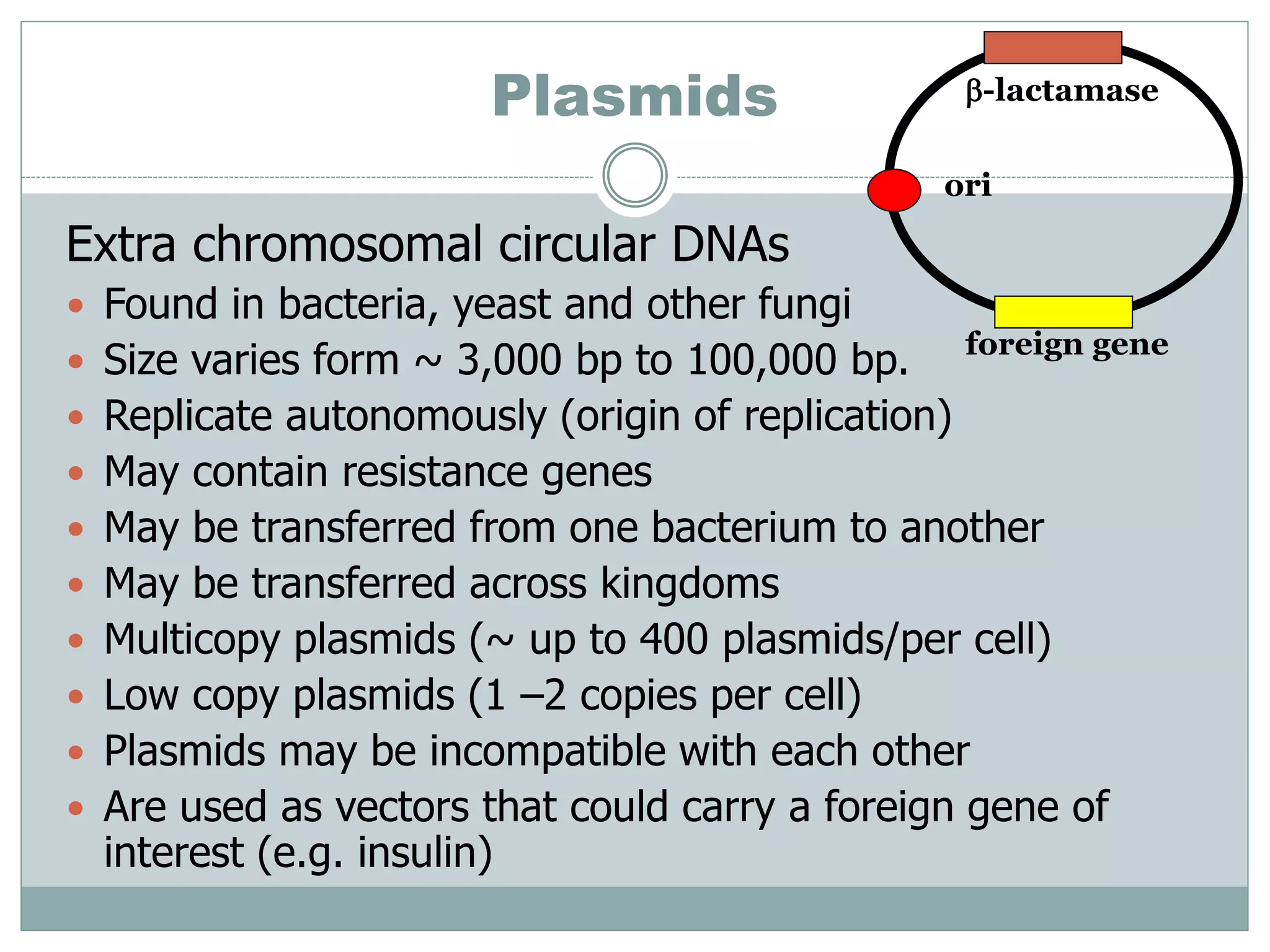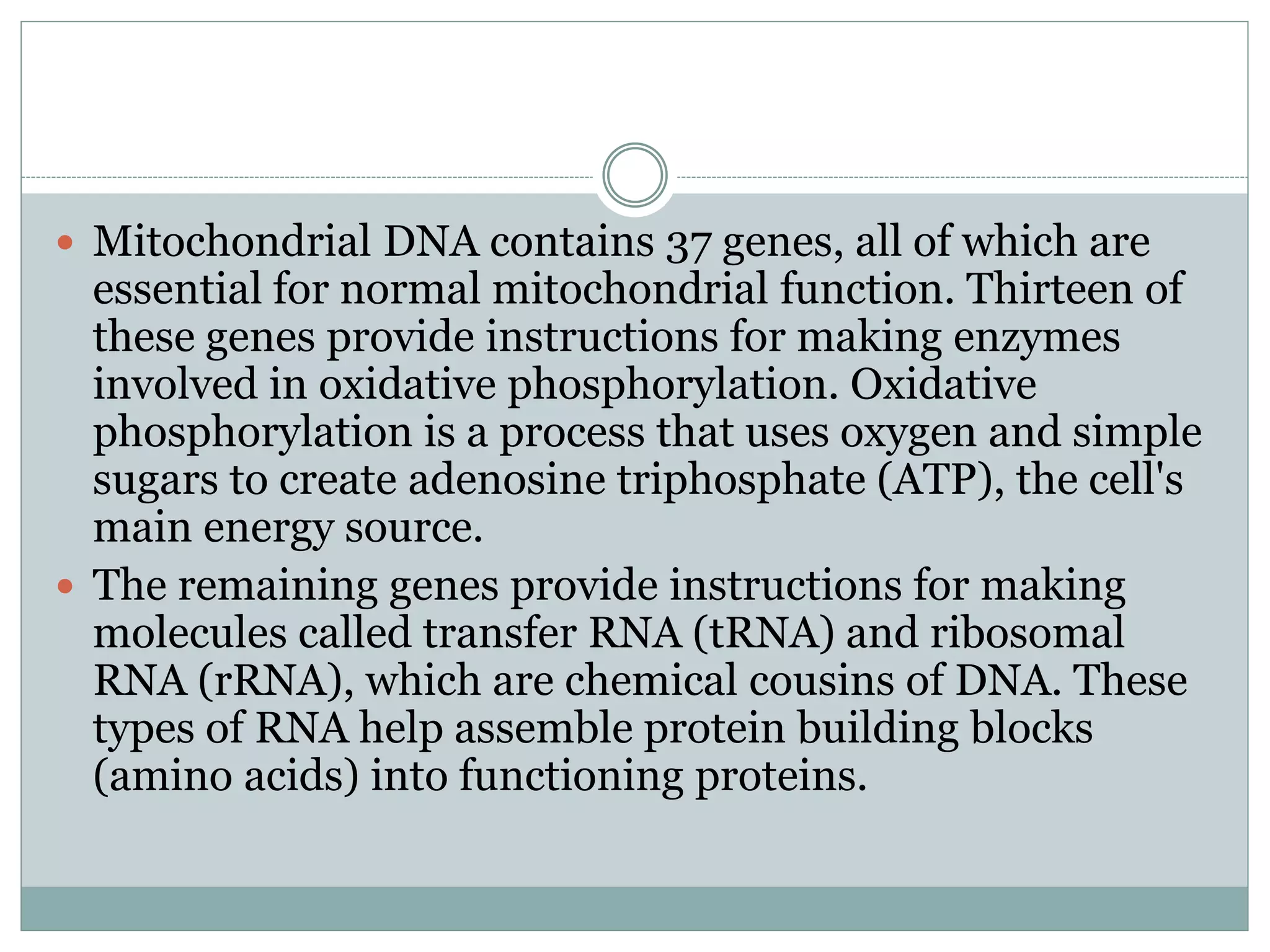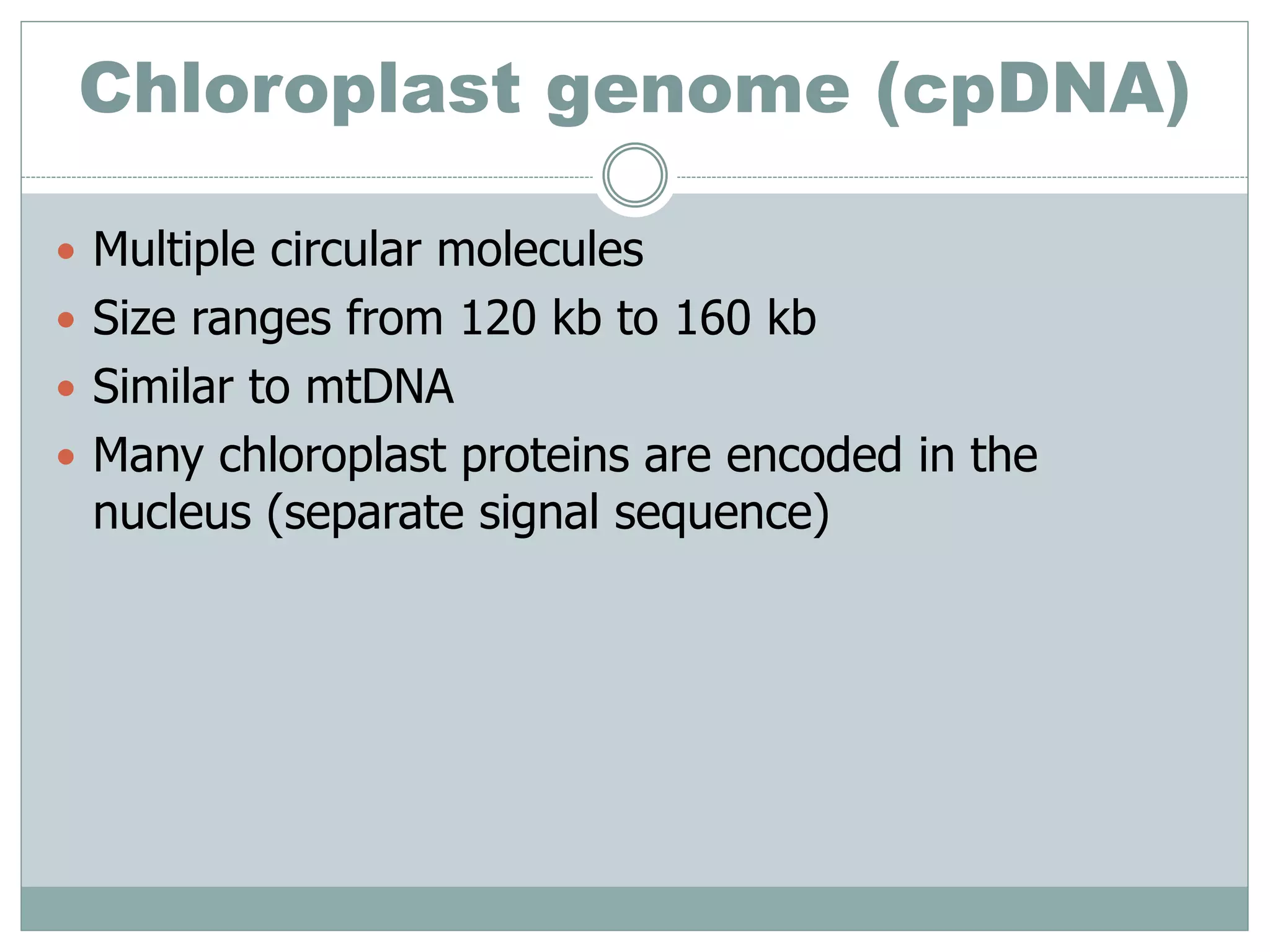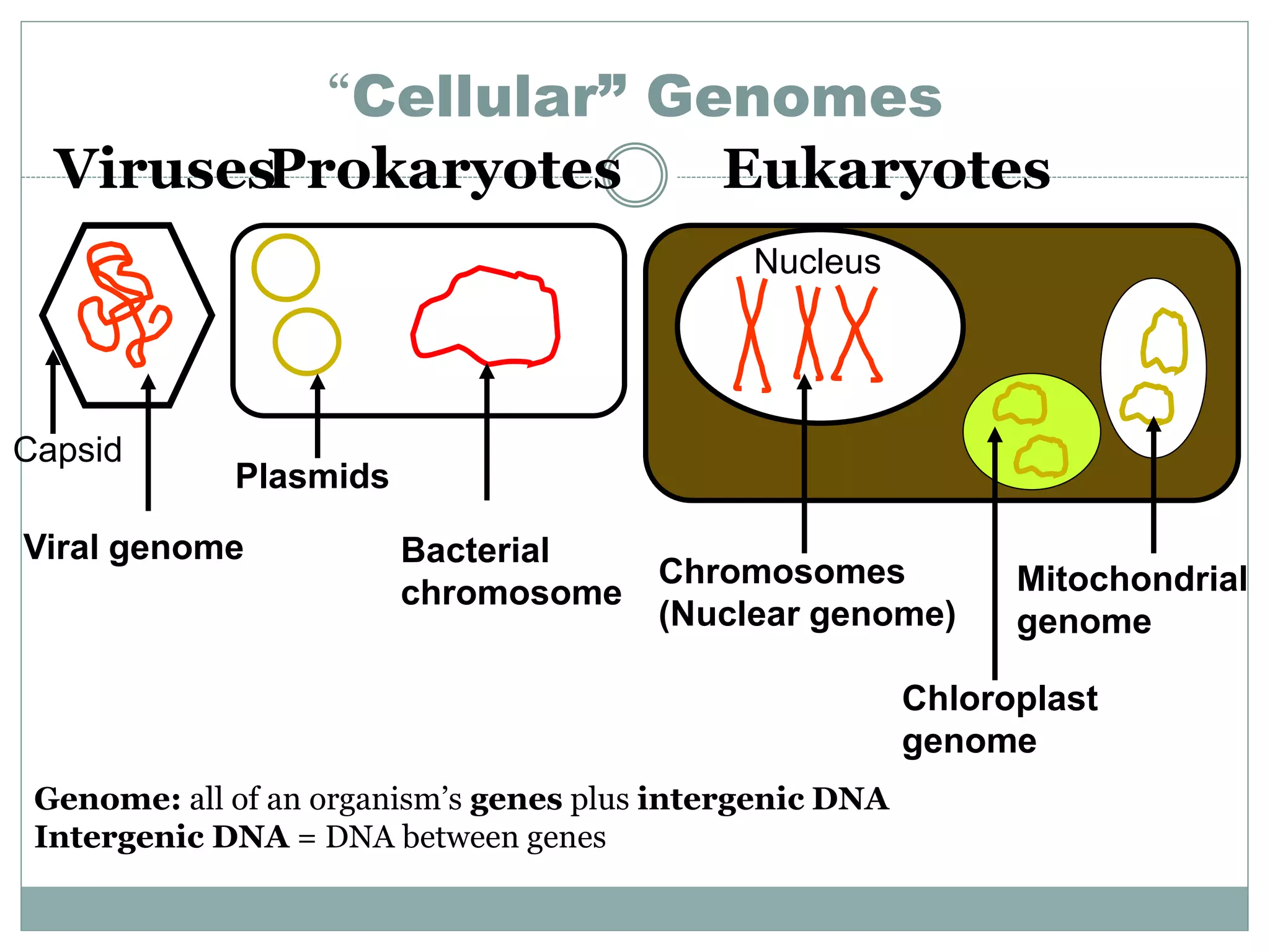This document discusses the organization of genetic material in prokaryotic and eukaryotic cells. It begins by defining key terms like genome and describing the overall structure of genetic material. It then contrasts prokaryotic and eukaryotic cells, noting things like prokaryotes having circular DNA without introns while eukaryotes have linear chromosomes and mRNA splicing. The document also discusses specific genetic elements like plasmids, viruses, and organelles. It provides details on their size, structure and content. Finally, the sizes of some viral, bacterial, and eukaryotic genomes are compared.



![CHROMOSOMEDIFFERENCE
[PROKARYOTICANDEUKARYOTICCELL]
PROKARYOTIC CELL
Lacksamembrane bound nucleus.
Circular DNAand supercoiled domain.
Histones not present.
Prokaryotic genomes generally contains one largecircular
piece of DNArefered to asaCHROMOSOME.
Somebacteria have linear chromosome.
Many bacteria have small circular DNAstr. CalledPLASMIDS
which can be swapped between neighbours and across
bacterial species.](https://image.slidesharecdn.com/bacterialviralgenomeorganisation2-190220041312/75/Bacterial-viral-genome-organisation-4-2048.jpg)


















